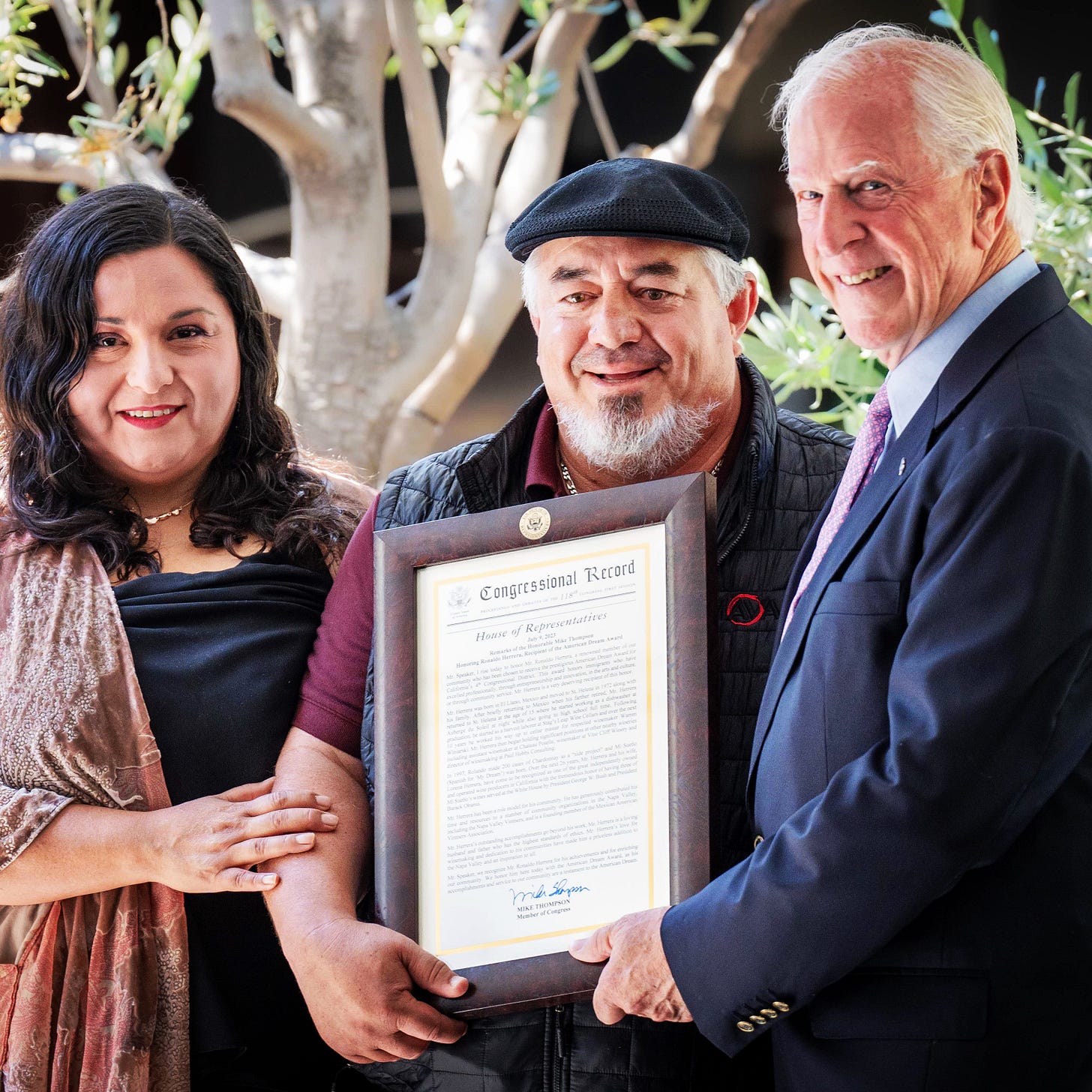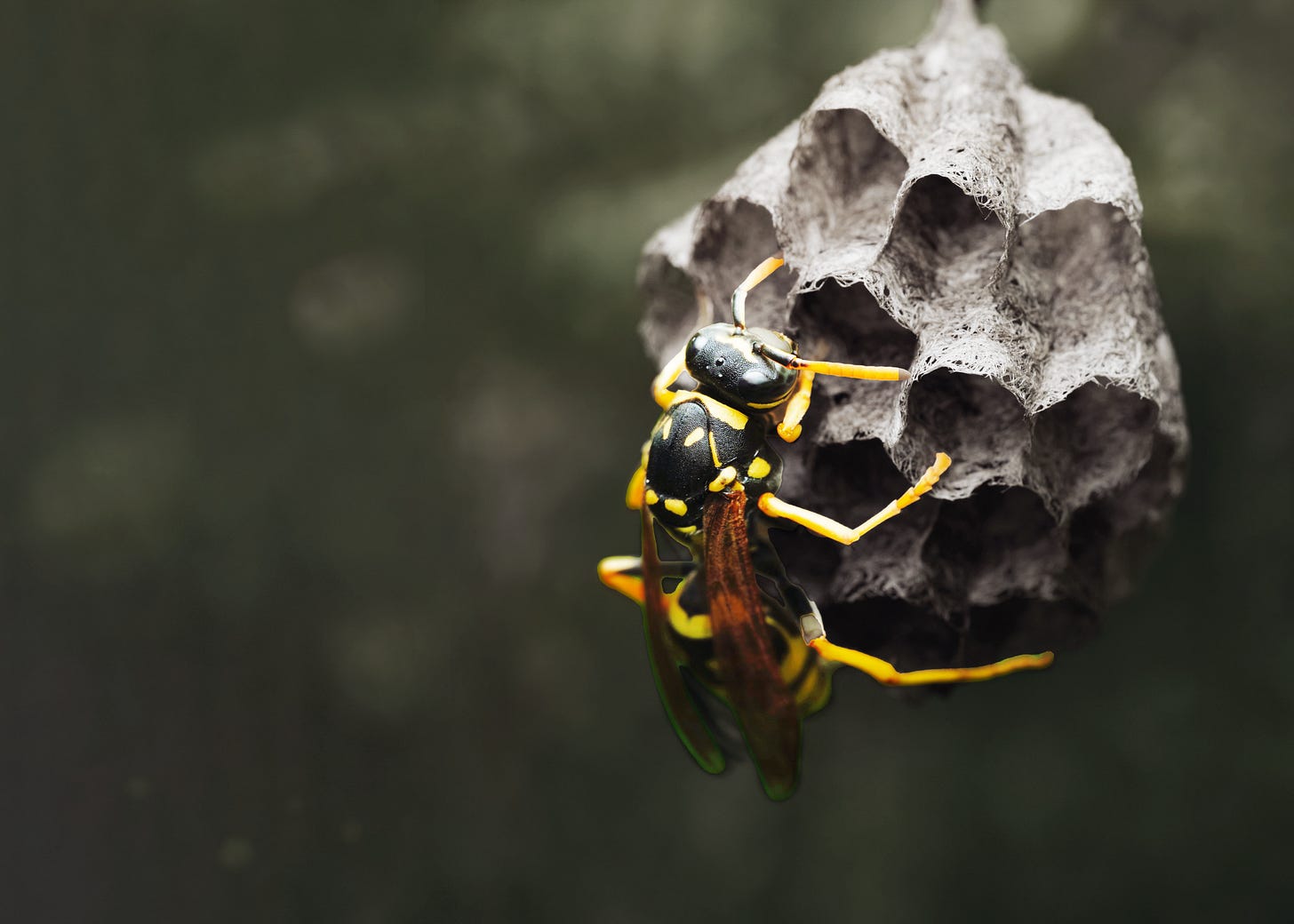CALISTOGA, Calif. — Last week while savoring a picnic I had uninvited but not altogether unexpected guests: a swarm of western yellowjackets (Vespula pensylvanica). Just like magic, the black-and-yellow insects appeared from nowhere. These flying party-crashers seem to love alfresco dinners as much as I do, but they cause quite a stir and sometimes leave behind a painful sting as a souvenir. But hold your rolled-up newspaper! These black-and-yellow interlopers are actual unsung eco-heroes, playing a remarkable — if often overlooked — role in our environment.
Wasps, with an impressive 30,000 known species, are a significant part of the Hymenoptera order, which includes bees, hornets, sawflies and ants. This group, named after the Greek words “hymen” (membrane) and “ptera” (wings), contains approximately 115,000 species. Bees and ants are the best-known members, representing about 20,000 and 12,000 species, respectively.
Despite the honeybee’s popularity, entomologists (known as hymenopterists when specializing in wasps and related insects) regard wasps as equally important for maintaining ecological balance. Wasps' roles in pollination, predation and parasitism are instrumental in this regard.
Consider the pollinating wasps, such as fig wasps from the Agaonidae family. They have a unique relationship with fig trees, and each wasp species is typically associated with a specific fig species. The female wasp lays eggs inside the fig, pollinating its internal flowers and starting a new cycle with each emerging wasp generation.
Potter or mason wasps contribute to pollination when they seek nectar from flowers. While not as efficient as bees, their role in pollination is significant, especially considering that honeybees are not native to California. In California native bees (such as the solitary species bumblebees, sweat bees and the California carpenter bee) and many native wasps play a vital role in pollinating the local flora.
Wasps also demonstrate impressive predatory behaviors. Spider wasps, notorious hunters, paralyze spiders and bring them to their nests to feed their offspring. Ichneumon wasps hunt caterpillars, laying their eggs inside the caterpillar for their larvae to consume upon hatching. Emerald-cockroach or jewel wasps (Ampulex compressa) sting roaches in the brain, turning them into zombielike creatures that provide fresh meat for the wasps’ growing brood.
Yellowjackets, when compared to these wasp variants, seem relatively benign even when they interrupt our picnics. These insects are proficient hunters, controlling populations of flies, mosquitoes and aphids, and they contribute to pollination as they move between flowers to collect nectar.
The yellowjackets' roles are not limited to pest control and picnic attendance. They aid in decomposing organic waste, acting as essential members of nature's cleanup crew. They also serve as a food source for various birds and bats, highlighting their significance in the food chain.
In some parts of Japan, hunting and eating wasps is traditional. Wasp larvae are harvested, boiled and served in a dish called hachinoko. Indigenous tribes in Africa and South America and practitioners of traditional Chinese medicine also value wasp venom for its medicinal properties, a claim supported by scientific studies.
Yet despite wasps' remarkable ecological roles, they also deliver painful stings. To avoid these, wear light, solid colors; steer clear of strong perfumes or scented lotions; and be careful with food and drinks when outdoors as wasps are attracted to sweet and meaty items. Exercise caution around wasp nests, and move away calmly if wasps are nearby as they may display swarming behavior if their nest is threatened.
The next time a yellowjacket interrupts your picnic, remember not only to stay safe but also to acknowledge their crucial role in the ecosystem. Despite their often-unwelcome presence, they contribute significantly to biodiversity. Your picnic, in fact, can act as a potent reminder that yellowjackets and their wasp kin, along with bees and ants, all help keep our local ecosystem buzzing.
The end of an era
Today (July 16) marks the last day the Napa Register will be delivered to doorsteps around the county. This moment signals not only the end of a beloved tradition but also the final runs for many long-serving newspaper delivery individuals, such as John Tam, who has been circulating papers around Napa County for the Register for the past 30 years. You can read his powerful yet tragic story here.

Last week
It was yet another bustling week at Napa Valley Features. We delved into an array of stories, from learning about a Napa Valley vintner who has gone ‘Loco’ for tequila, producing the spirit in Mexico's Jalisco region, to celebrating theAmerican Dream Award given by U.S. Rep. Mike Thompson to Rolando Herrera and his wife, Lorena, for their contributions to our community.
We also covered the ambitious eco-initiative of Carlo Mondavi, a fourth-generation vintner from the renowned Napa Valley wine family. His launch of the Monarch Tractor, an eco-friendly electric tractor, is being hailed as revolutionary by early adopters. In a different vein, Sasha Paulsen shared a lively account of her recent trip to France, an enchanting narrative that leaves one yearning for a European getaway.

Paulsen also reported on the Jarvis Conservatory's plans to screen films of its Spanish zarzuela musicals that were originally staged between 1995 and 2008. These professionally filmed productions will be shown from Aug. 11 through 13. Additionally, we included Paul Pick’s, recommendations for the weekend from Paul Franson, and our weekly expert from UC Master Gardeners focused on the water-saving benefits of landscaping with native plants.
The week ahead
The coming week promises to be equally exciting. We will explore the predicted surge in the region's snake sightings with a local rattlesnake wrangler, delve into cowboy culture in Napa Valley and get a taste of Tiki culture in Yountville. We also have some wine and farm produce tips from a local wine shop owner, along with Friday’s Paul's Picks, garden tips and possibly an announcement that will send ripples through the local media ecosystem.
We want to express our gratitude to you for being part of the Napa Valley Features community. Your support enables us to remain ad-free. We're glad to have you along for this journey.
Tim Carl is a Napa Valley based photojournalist.






